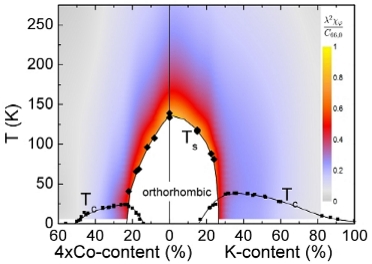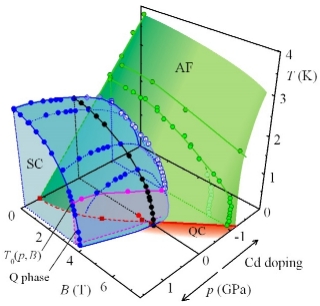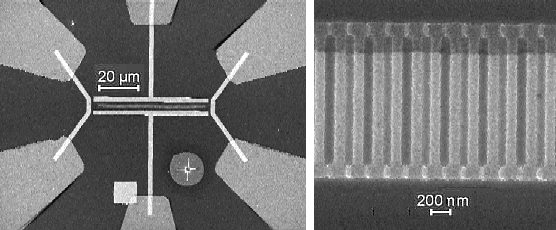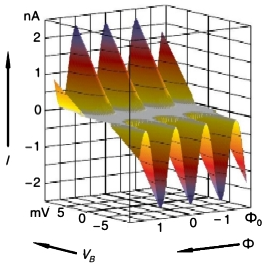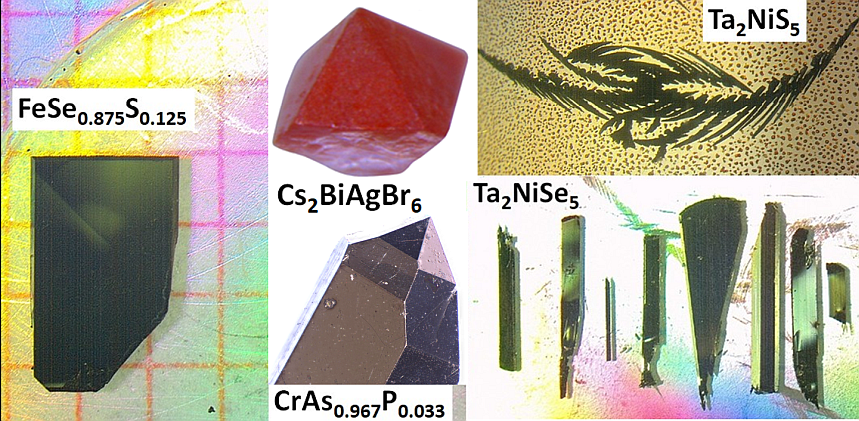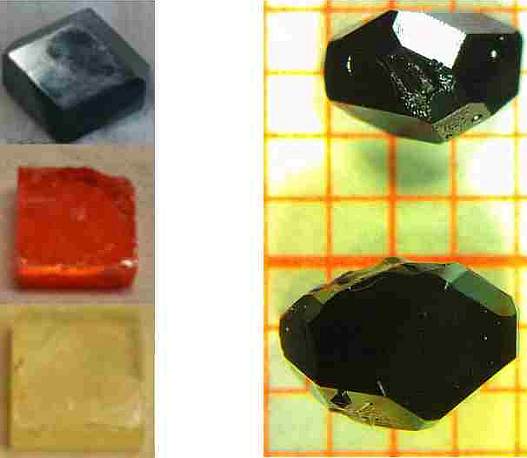Working Group New Materials, Transport, Thermodynamics and Mesoscopics
|
Fe-based Superconductors
Superconductivity in the Fe-based materials occurs in the vicinity of a magnetic/structural critical point, suggesting that magnetic/structural fluctuations may be important for the pairing mechanism. The nematic susceptibility, i.e., the susceptibility of the electronic order driving the structural transition, has turned out to be a good measure of such fluctuations. In order to gain access to the nematic susceptibility of hole-doped Ba1-xKxFe2As2 and electron-doped Ba(Fe1-xCox)2As2 superconductors, a new technique was developed by which the shear modulus is measured using a three-point bending setup in a capacitance dilatometer. Nematic fluctuations, although weakened by doping, were found to extend over the whole superconducting dome in both systems, suggesting their close link to superconductivity. Evidence for quantum critical behavior of the nematic susceptibility was, surprisingly, only found for Ba(Fe1-xCox)2As2, the system with the lower maximal Tc value. Further, a scaling relation between nuclear magnetic resonance (NMR) and shear modulus data in the tetragonal phase of electron-doped Ba(Fe1-xCox)2As2 compounds was found, which provides strong evidence for a magnetically-driven structural transition.
|
Heavy-Fermion Compounds
Continuous magnetic phase transitions driven to zero temperature by a non-thermal control parameter yielding a quantum critical point (QCP). The excitations close to the QCP as measured, e.g., by the specific heat, do not follow the predictions of Fermi-liquid theory. Furthermore, often novel phases emerge in the proximity of a QCP. The heavy-fermion system CeCoIn5 is a well-established member of the growing family of compounds exhibiting unconventional superconductivity close to antiferromagnetic order. Locating the the exact position of a QCP is however difficult, because it is masked by superconductivity. Our thermal-expansion and magnetostriction measurements on CeCoIn5 single crystals indicate that the pronounced deviations from Fermi-liquid behavior arise from a quantum critical line, i.e., an antiferromagnetic phase boundary in the field and pressure plane at zero temperature that is shielded by superconductivity. Together with pressure and doping data, a three-dimensional phase diagram showing this phase boundary could be constructed.
|
| Selected Publications: |
| (5) S. Zaum et al., Phys. Rev. Lett. 106 (2011) 87003 |
| (6) A. Hamann et al., Phys. Rev. Lett. 110 (2013) 96404 |
| (7) K. Grube et al., Phys. Status Solidi B 247 (2010) 571 |
Electronic Transport in Normalconducting and Superconducting Nanostructures
(R. Schäfer)
We fabricate and investigate single-charge devices of normal metals and superconductors. Superconducting tunnel contacts ('Josephson contacts') may carry a supercurrent if the phase of the superconducting order parameter on both sides of the contact is suitably fixed. However, fixing the phase phase of the superconducting condensate excludes determination of the involved charge. This leads to a peculiar transport behavior of mesoscopic Josephson-junction devices which is the focus of our present research. In particular, we investigate chains where supercurrents can be switched on and off by magnetic fields.
|
|
Crystal Growth (A.-A. Haghighirad)
Our laboratory is equipped for the preparation of samples in single-crystalline and polycrystalline form. Single crystals are grown using mainly growth from the melt or flux, as well as vapor-growth techniques. The growth parameters are optimized according to a detailed compositional and structural characterization of the crystals in order to continuously improve the degree of perfection of the crystals. If required crystals with a particular impurity doping concentration can be grown.
For sample preparation, chamber furnaces, top-loading furnaces and tubular furnaces up to working temperatures of 1800 °C, Czochralski furnace, 3-zone furnace, induction furnace, arc-melt furnace, mirror furnace, autoclave furnace are available.
Superconducting and related materials:
TiN, ZrN, HfN, TiC, YBa2Cu3Ox-family (La-Lu), BaCuO2, Ba2CuO3, CuO, (Nd1-xCex)2CuO4, (Gd1-xNdx)2CuO4, BaFe2As2, SrFe2As2, CaFe2As2, KFe2As2, RbFe2As2, CsFe2As2, KxFe2Se2, FeAs, FeSe, FeTe, FeTe2, FeI2, MgB2, AlB2, (Ca/Sr)CuO2, Ca(Al0.5Si0.5)2, NbSe2.
Quantum critical materials:
YbNiSi3, YbNiGe3, YbPdSn, LaCu6, CeCu6-xAux,YbB2, YbB4, YbAlB4, CrB2, Cr2B3, CrAlB4.
Magnetic and other materials:
BaNi2V2O8, BaNi2-xMgxV2O8, Ni3V2O8, Co3V2O8, MnSi (Al, Co, Fe), Ba2V3O9, Ba2V2O7, Ba3V4O13, Cs2CuCl4, Ti4O7, Zn4Sb3, YBaCo4O7, La2Mo2O9, Co3TeO6.
|
|

